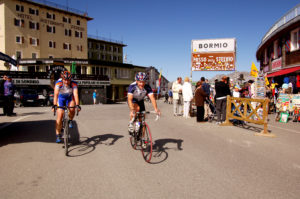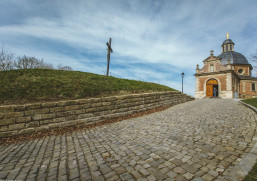Climbing to Imperial Heights
The great modern architect Le Corbusier once said “there are mountains, and then there are the Dolomites.” And while the tiny, bespectacled Swiss was surely a much better designer than he was a cyclist, he nevertheless made no clearer statement of Europe’s natural landscape and the essence of design than to conclude “The Dolomites are the most beautiful construction in the world.” A cerebral and arrogant man who studied the intrinsic value of light and shade, depth and space, and natural and man made form, Le Corbusier clearly understood what makes the Dolomite mountain range of the Italian Alps so stunning, so inspiring and to a cyclist, so challenging. Forming white, gray and pink curved crystals, It’s the unique carbonate mineral named dolomite that is responsible for giving the mountains their sculptural shapes, like a vertical maze of futuristic high rises and city blocks jutting in exaggeration from a science fiction movie set, defining the sky in a way that is at once breathtaking, and yet so recognizable as the backdrop to the sports most colorful and exciting grand tour, Il Giro d’Italia. But it’s before the day has dawned and while the sun begins to set when the beauty of what Le Corbusier described and French mineralogist Dieudonne Sylvain Guy Tancrede de Gratet de Dolomieu uncovered that truly sets the mountains apart- a rose pink glimmer in the early morning hours as the jagged peaks and vertical mountain walls absorb the low morning light, to a blood red sunset as the cool evening air envelopes the eighteen different peaks that thrust skyward beyond 10,000 feet. And much like the French Pyrénées has the Col du Tourmalet and the French Alps has the Col du Galibier, the Dolomites are captained by the highest pass in Italy, the Passo dello Stelvio. Read more here


